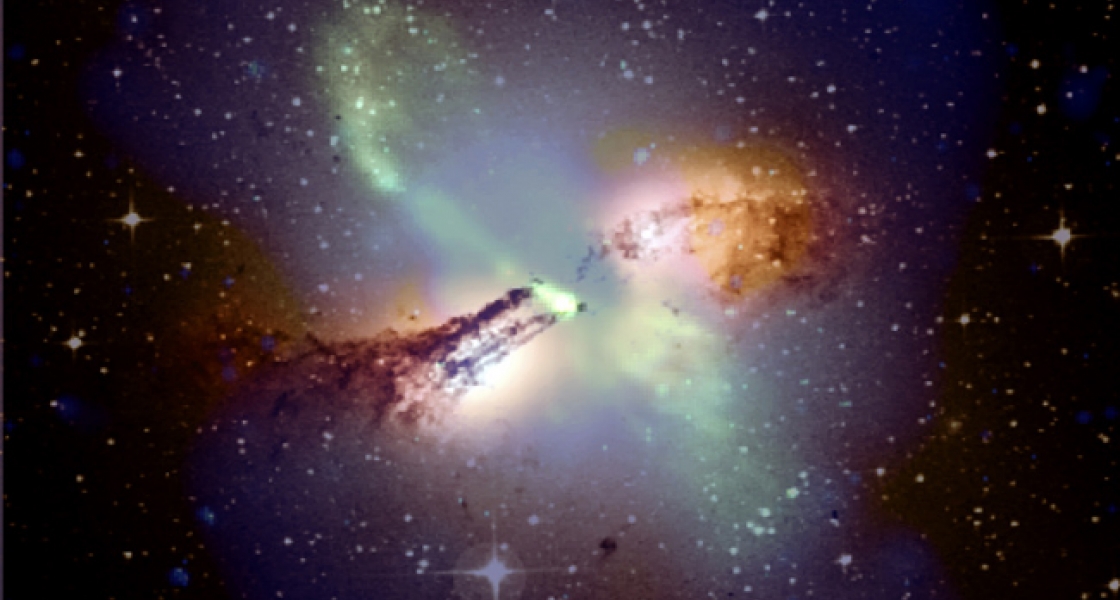In Ray Bradbury’s book Something Wicked This Way Comes, people get older or younger depending on which direction they ride on a carnival carousel. Something similar may happen to black holes, except that they become gargantuan or just a smidgeon larger depending on how fast they spin while they’re sucking in matter. The slower they spin, the faster they expand, says Visiting Fellow Andrew King of the University of Leicester. And, how fast they spin is influenced by the direction and orientation of clouds of gas being pulled into them. For the clouds, it’s a lot like jumping onto a carousel.
If you run alongside a carousel in the same direction it’s spinning and jump on, your momentum makes the carousel spin faster. But if you are running in the opposite direction when you jump on, your momentum slows the carousel down. So if the carousel is a black hole, gas clouds falling into it while spinning in the opposite direction will slow down the black carousel’s rotation. As it turns out, this slow-down may be critical to the rapid growth of supermassive black holes. King and his colleagues recently argued that in the early Universe, only black holes spinning very slowly could have mushroomed from the size they were first created in supernovae to become supermassive black holes in less than a billion years.
King’s theory runs counter to the traditional belief that rapidly spinning black holes were responsible for the formation of supermassive black holes. Even so, rapidly spinning black holes are quite amazing. Their circular accretion disks form quite close to the holes. As matter falls in, radiation is released, and the system spins even faster. Bright relativistic jets emerge out of the holes at wide angles to the accretion disks. Gas in the disk rubs against itself, creating even more light. This turbulent and chaotic feeding process creates the luminous centers astronomers observe in active galactic nuclei; in the early Universe, it created quasars, which are a trillion times brighter than the Sun.
So why couldn’t such a blazing cosmic feast create a supermassive black hole over the course of a billion years? King’s answer is simple. The outflow of radiation produced in the feeding frenzy actually pushes significant amounts of matter away, keeping the feeding rate low. The radiation also contributes to instability in accretion disks (especially those that initially come into more distant orbits at odd angles); such disks often fragment into stars rather than falling into the black hole.
In contrast, slowly spinning black holes feed very differently. When material comes within their gravitational pull, much of it falls directly into the hole, producing almost no light. This “quiet meal” happens because of the instability of the close-in circular orbits of their accretion disks. And, because their last stable circular orbits are much farther away than those of their rapidly rotating counterparts, lots more material is available for feeding this kind of black hole. Plus, the bigger it gets, the faster it grows. Taken together, these factors make it possible for a slowly spinning black hole to expand in size from 10 solar masses to a billion or more solar masses in less than a billion years!
King offered another reason why slow spinning black holes are the true gluttons of matter in the Universe. For the past 12 billion years or so, whenever a galaxy merged with another galaxy (or even a huge interstellar gas cloud), new matter has been funneled toward the largest central black hole — from totally random directions. This randomization has acted to keep black-hole spins low through a variety of mechanisms, including causing a disk spinning in sync around the black hole’s equatorial plane to turn over and go in the opposite direction.
For those galaxies where randomization has failed to slow down the spin of the central black hole, incoming new matter continues to create dazzling active galactic nuclei and plump up galaxies’ central black holes. In fact, as reported in the Spring 2007 JILA newsletter, an active and turbulent feeding process likely happened in the Milky Way galaxy about 6 million years ago. This activity resulted in two egg-shaped necklaces of magnificent stars surrounding our own enormous central black hole, Sagittarius A*. - Julie Phillips




